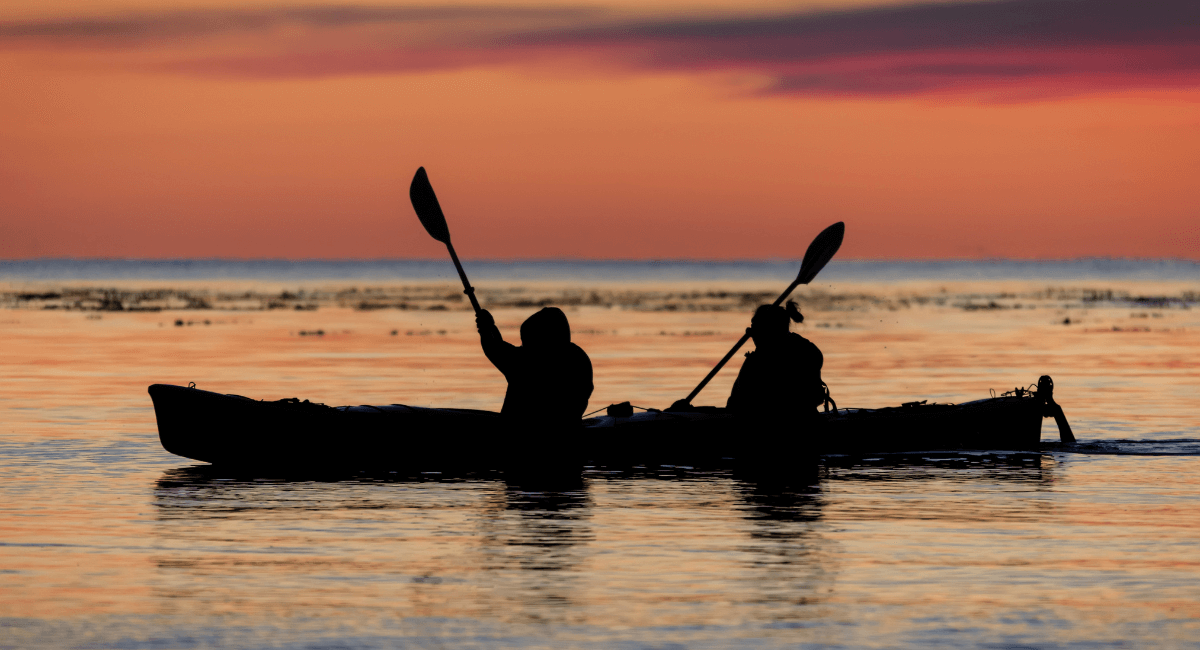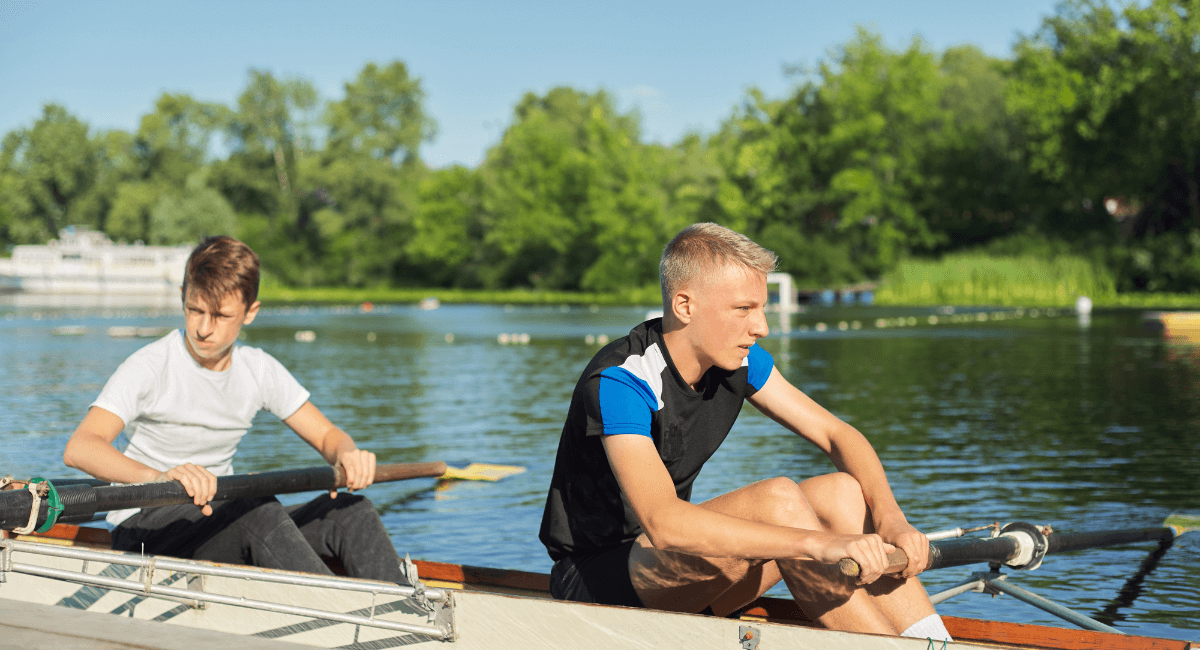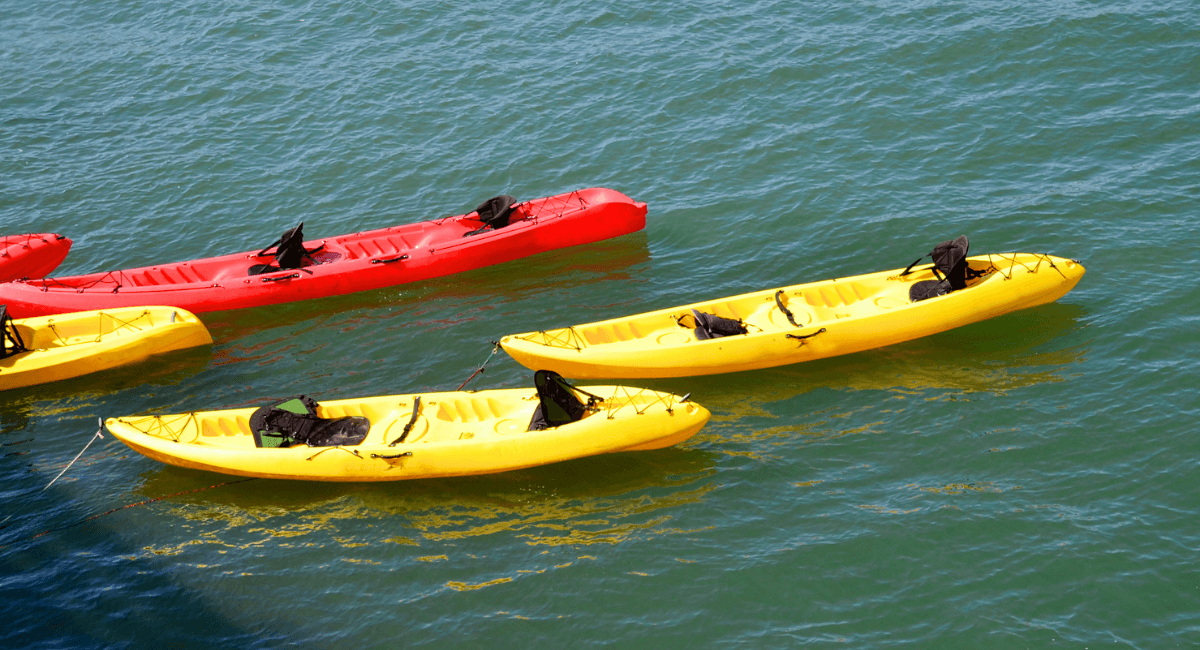Double kayak tips for beginners include learning to synchronize paddling with your partner and practicing communication for efficient maneuvering. As a beginner, it’s important to familiarize yourself with the basics of kayaking and perfect your paddling technique for a smooth and enjoyable experience.
Double kayaking offers a unique opportunity for teamwork and coordination, making it essential to establish a rhythm with your partner and communicate effectively on the water. This guide will provide you with valuable tips and insights to help you navigate the waters with confidence and have a memorable kayaking adventure.
Whether you’re new to kayaking or looking to improve your skills, these tips will set you on the right path to mastering the double kayak experience.
Choosing The Right Double Kayak
When starting your kayaking journey, selecting the right double kayak is crucial for a smooth and enjoyable experience.
Considerations For Stability
- Wider kayaks offer better stability for beginners.
- A flat bottom hull provides more stability than rounded hulls.
- Look for kayaks with multiple chines for enhanced stability.
Size And Weight Capacity
| Size | Weight Capacity |
|---|---|
| Opt for a longer kayak for increased tracking and speed. | Ensure the kayak can support the combined weight of paddlers and gear. |
|
Consider the kayak’s width for stability and comfort. |
Exceeding weight capacity may affect stability and performance. |
Choosing a double kayak with proper stability and weight capacity is essential for beginners to learn and enjoy kayaking.
Essential Gear For Double Kayaking

When embarking on a double kayaking adventure, having the right gear is essential for a safe and enjoyable experience. Whether you are new to this thrilling water activity or a seasoned paddler, knowing the essential gear for double kayaking is crucial. In this section, we will cover the must-have equipment for double kayaking and how each item contributes to a successful outing.
Pfds And Safety Equipment
- Personal Flotation Devices (PFDs): Each kayaker should have a properly fitting PFD that is Coast Guard-approved. PFDs ensure safety on the water and are a critical piece of gear for all kayakers.
- Whistle or Signal Device: Carry a whistle or other signaling device to alert others in case of an emergency. These compact items can be easily attached to your PFD for quick access.
- Safety Kit: Pack a safety kit that includes items such as a first aid kit, an emergency blanket, and a multi-tool. These supplies can be invaluable in unexpected situations.
Paddles And Navigation Tools
- Kayak Paddles: Each paddler should have a suitable kayak paddle that is comfortable and sized correctly for the intended use. Adjustable paddles are convenient for double kayaking.
- Kayak Compass: A compass can be an essential tool for navigation, especially in open water or unfamiliar locations. Ensure the kayak compass is securely attached and easily visible.
- Map or GPS Device: Bring along a waterproof map or utilize a GPS device to aid in navigation. Knowing your location and route is crucial for a safe and enjoyable journey.
Tandem Kayaking Techniques

In tandem kayaking, effective communication and synchronization between both paddlers are crucial. Successful tandem kayaking requires a deep understanding of balancing and coordination as well as clear communication and seamless synchronization. Let’s explore these fundamental techniques for a great tandem kayaking experience.
Balancing And Coordination
Balancing and coordination are key to an enjoyable tandem kayaking experience. As the paddlers’ movements and weight distribution directly affect the kayak’s stability, it’s essential to maintain a balanced weight distribution. Each paddler should sit comfortably and symmetrically in the kayak. Additionally, coordinated paddling strokes and synchronized movements help maintain stability and propel the kayak forward efficiently.
Communication And Synchronization
Clear communication between tandem kayakers is pivotal. Establishing common signals and pre-determined cues can effectively convey intentions and adjustments during the paddling journey. Whether it’s signaling a directional change or adjusting the pace, efficient communication ensures a harmonious tandem kayaking experience.
Moreover, synchronization of paddling strokes is vital to maintain the kayak’s momentum and maneuver smoothly. Both kayakers must work together as a cohesive unit, synchronizing their paddle strokes to avoid any disruptions and make the most out of their tandem kayaking adventure.
Safety Precautions And Awareness

Safety Precautions and Awareness
As a beginner double kayak enthusiast, it’s crucial to prioritize safety. Understanding water conditions and being equipped with proper rescue and recovery techniques are essential aspects to ensure a safe and enjoyable kayaking experience.
Understanding Water Conditions
Water conditions greatly impact your kayaking adventure. Be mindful of currents, tides, and weather forecasts. Check for potential hazards such as rocks or strong winds before setting out.
Rescue And Recovery Techniques
In case of an emergency, it’s important to know rescue techniques. Practice capsize recoveries and have a plan in place. Utilize safety gear like life jackets and communication devices for added security.
Launching And Landing As A Team
When it comes to kayaking, one of the most important skills to master as a beginner is launching and landing your double kayak as a team. Proper positioning and timing, along with the ability to navigate obstacles, can make the difference between a smooth and enjoyable outing or a frustrating experience. In this article, we will provide you with helpful tips and guidelines to ensure a successful launch and landing every time. Let’s dive in!
Proper Positioning And Timing
Positioning yourself and your kayaking partner correctly in the double kayak is crucial for a safe and efficient launch and landing. Consider the following tips:
- Sit face-to-face: When preparing to launch or land, ensure that you and your partner are sitting facing each other. This allows for better communication and coordination throughout the process.
- Balance the weight: Distribute the weight evenly between the two paddlers. Aim to have equal weight distribution to avoid tipping or instability when getting in or out of the kayak.
- Coordinate movements: Establish a clear plan and communicate with your partner about when to move. Timing is crucial, especially when launching or landing in waves or strong currents.
Navigating Obstacles
While kayaking, you may encounter various obstacles such as rocks, logs, or other watercraft. Here are some tips to help you navigate these obstacles smoothly:
- Keep a lookout: Maintain awareness of your surroundings and constantly scan the water for any obstacles that may impede your path. This will allow you to plan your movements and avoid potential collisions.
- Communicate effectively: Use clear and concise communication with your partner to discuss and decide on the best course of action when faced with an obstacle. This will help you work together seamlessly and make appropriate adjustments as needed.
- Make small, deliberate movements: When maneuvering around obstacles, make small and deliberate movements with your paddle to maintain control and avoid sudden jerks that may destabilize the kayak.
Building Endurance And Stamina
For beginners looking to build endurance and stamina in double kayaking, it’s essential to focus on paddling techniques and gradually increasing time on the water. Incorporating strength and conditioning exercises, as well as maintaining a consistent training schedule, can help improve overall performance.
Additionally, paying attention to proper nutrition and hydration is crucial for sustained energy during kayaking sessions.
Effective Paddling Techniques
To build endurance and stamina in double kayaking, mastering effective paddling techniques is essential. Paying attention to your body positioning and using the correct strokes will not only improve your efficiency but also help you conserve energy during long paddling sessions.
Start with maintaining a proper grip on your paddle, ensuring that your hands are at shoulder-width apart and your elbows are slightly bent. This will minimize strain on your arms and help you paddle for longer periods without fatigue.
Engaging your core muscles while paddling is equally important. Your core acts as a stable base, enabling you to use your upper body effectively and generate more power. Focus on rotating your torso with each stroke, engaging your obliques and abdominal muscles to get the most out of each movement.
Add variety to your paddling techniques by incorporating different strokes. The forward stroke is the most basic and efficient, propelling the kayak forward with every stroke. The sweep stroke is used for turning and gives you more control over your kayak’s direction. The draw stroke helps you bring the kayak sideways, making it useful for maneuvering in tight spaces.
Training And Conditioning
In addition to mastering paddling techniques, training, and conditioning will enhance your endurance and stamina in double kayaking. Incorporate these strategies into your routine to improve your overall physical fitness levels:
- Cardiovascular workouts: Engage in activities such as running, cycling, or swimming to increase your cardiovascular endurance levels.
- Strength training: Focus on strengthening your upper body and core muscles through exercises like push-ups, pull-ups, and planks. This will provide additional support and power during kayaking sessions.
- Flexibility exercises: The nature of kayaking requires a wide range of motion. Perform stretching exercises regularly to improve your flexibility and reduce the risk of injuries.
- Interval training: Incorporate interval training in your workouts by alternating between high-intensity bursts and recovery periods. This type of training mimics the intensity changes experienced during kayaking and improves your overall endurance.
- Progressive overload: Gradually increase the duration and intensity of your kayaking sessions over time to challenge your muscles and improve your endurance.
Remember, consistency is key when it comes to building endurance and stamina. Make sure to stay hydrated and include rest days in your training routine to allow your body to recover.
Exploring Double Kayak Destinations
Introductory paragraph about Exploring Double Kayak Destinations
Ready to embark on a thrilling adventure in a double kayak? Discover the beauty of nature as you paddle through stunning waterways with your partner or a friend. To make your experience even more memorable, let’s explore some exciting double kayak destinations.
H3 heading: Scenic Routes and Waterways
Scenic Routes And Waterways
- Coastal Trails: Navigate along picturesque coastal paths for breathtaking views of the water.
- River Exploration: Delve into serene rivers surrounded by lush greenery and diverse wildlife.
- Lake Serenity: Glide through calm lake waters with stunning mountain backdrops.
H3 heading: Choosing Suitable Locations
Choosing Suitable Locations
- Consider Skill Level: Pick destinations that match your kayaking expertise to ensure a safe and enjoyable trip.
- Weather Conditions: Check the weather forecast and choose locations with suitable conditions for kayaking.
- Scenic Beauty: Opt for locations with beautiful landscapes and natural wonders to enhance your experience.
Maintaining And Storing Your Double Kayak
When it comes to kayaking, knowing how to properly maintain and store your double kayak is essential to ensure its longevity and performance. Whether you are a beginner or a seasoned paddler, taking care of your equipment is crucial. In this section, we’ll cover some important tips for maintaining and storing your double kayak, so you can enjoy many more adventures on the water.
Cleaning And Maintenance Tips
Maintaining your double kayak is essential to prolong its lifespan and keep it performing at its best. Here are some cleaning and maintenance tips to keep your kayak in top condition:
- Rinse your kayak with fresh water after each use to remove salt, sand, and debris.
- Inspect the kayak for any signs of damage or wear and tear, such as scratches or cracks.
- Apply UV protectant to the hull and cockpit to prevent sun damage.
- Check and tighten any loose bolts or fittings to ensure the kayak is secure.
- Regularly lubricate the moving parts, such as hinges and rudders, to prevent corrosion and maintain smooth operation.
Storage And Transport Considerations
Properly storing and transporting your double kayak is important to prevent damage and ensure convenience. Consider the following storage and transport tips:
- Store your kayak in a dry, shaded area away from direct sunlight and extreme temperatures.
- Use a kayak rack or hoist system to store your kayak off the ground to prevent warping and damage.
- When transporting your kayak, use padded cradles or foam blocks on the roof of your vehicle to provide cushioning and support.
- Secure the kayak with tie-down straps to prevent shifting or movement during transportation.
- Consider investing in a kayak cover or bag to protect your kayak during storage and transport.
Frequently Asked Questions On Double Kayak Tips For Beginners
How Do I Choose The Right Double Kayak Size?
Choosing the right double kayak size depends on factors like weight capacity, stability, and ease of maneuverability. Consider your intended use, body size, and skill level. Test different sizes before buying, and consult with experts at a kayak rental or retail shop for guidance.
What Safety Precautions Should I Take While Double Kayaking?
Ensure all passengers wear properly fitted life jackets, even if they can swim. Familiarize yourself with paddling techniques and practice rescues. Check weather forecasts and avoid rough waters, especially if you’re a beginner. Keep a whistle or signaling device handy and paddle within your abilities.
Are There Any Techniques For Paddling A Double Kayak Efficiently?
Communication and synchronization are key when paddling a double kayak. Establish clear communication signals with your partner, such as tapping the kayak or using hand signals. Coordinate your paddling strokes, ensuring both paddles enter and exit the water at the same time for efficient propulsion.
Conclusion
In a nutshell, mastering the art of double kayaking can be a fun and rewarding experience. By following these beginner tips, you’ll be well-equipped to navigate the waters confidently. Stay safe, communicate with your partner, and enjoy the journey ahead.
Happy kayaking!
